With schools in Wales preparing to welcome all pupils back at the end of June, how will teachers be able to ensure learners – especially younger children – adhere to the two metre social distancing guidelines?
Here, Dr Nalda Wainwright, Director of the Wales Academy for Health and Physical Literacy at the University of Wales Trinity Saint David discusses how this challenge could present schools with an opportunity to think differently about the use of playtime – using it as a time to develop children’s movement and to lay the foundations of physical activity for later life.
As schools begin to go back in England and later this month in Wales, I am sure we have all been shocked with images from other countries of children sitting alone in their marked out areas at ‘play time’ to ensure social distancing. However I see that this time gives us an opportunity to think differently about the use of playtime as a time to develop children’s movement, and lay the foundations of physical activity for later life, whilst modelling some activities that they can continue to play at home.
Here, I want to outline some of the things that children need to learn in early childhood and also how we can use changes in approaches in schools to create positive, fun physical learning sessions during play time.
Play is an extremely important part of children’s development and is a time for children to relax with friends, and run around, or chat and socialise, work out issues and explore ideas, emotions, movement and creativity. However the current situation means that in schools, for now, this is not possible in the usual ways. Guidance around social distancing are raising many questions about how we can allow children to play safely. The interesting part of this for me is that a key part of what young children should be learning in their physical development and physical education sessions is spatial awareness, and as such is key to young children learning to recognise personal space and boundaries.
When we train students and teachers about physical development in early childhood we begin with fundamental movement concepts. This involves learning spatial awareness, body awareness, dynamics and relationships in movement. This helps the children to build what we call a movement vocabulary, which helps them understand how to move and control their body in their own personal space and then in the general space around others. This building of a movement vocabulary means that children can be more creative and more skilful in their movement and have access to moving in more environments.
For children starting school the command ‘stand in a space’ has no meaning unless they understand what a space is. Social distancing is super challenging if you do not understand what your own personal space is.
The starting point for Physical Education for very young children is exploring spatial and body awareness. In good early physical education children are learning to understand their own personal space and how to move around without encroaching on other children’s personal space. In the current circumstances it is clear that this learning is more crucial than ever for our children.
The return to school offers an opportunity to use play time as a time for Physical Education where children can be learning about spatial and body awareness and developing a movement vocabulary and improving skills. Although it is not free play, it is physical, fun and social (all cues that children associate with play) and will be developing the skills that will help them to move more safely and learn about the management of their body and the use of space in all aspects of their life.
So how can we do this?
Where possible physical education and play time should be outside (see the Association for Physical Education guidance on their website.
Children will also need to have their own bags of equipment to reduce transmission of the virus. You can see a suggested list of equipment for Foundation phase (Early years and KS1) and Key Stage 2 children on the University’s Wales Academy for Health and Physical Literacy website – www.physicalliteracy.cymru
Many young children need cues to help them to get into a space, (as do people shopping in a supermarket it would seems). Small crosses of tape / chalk can be used to show children where to stand initially and then they can place a spot or cone from their own equipment bag there. Following the guidance all spots or markers or chalked circles should be 2m apart, which they should be even without Covid19. Each child goes to a spot.
We then explore an imaginary bubble around ourselves….the edges of the bubble are as far as we can reach in every direction when keeping one foot still and stepping with the other foot and stretching, so the children realise that this a very large bubble around them. Once they get this we can explore balances and shapes in our bubbles to develop body awareness.
As children realise the size of their bubble they can begin to move around the playground. The important message here is that they must not bump into anyone else’s bubble. This needs to be done gradually travelling slowly around the space first and returning to their spot. As they are learning to manage this and are keeping in their bubbles, you can start to introduce (over many sessions) different directions, levels, speeds and pathways of travel. Also you can start to explore ways of moving, jumping, skipping, hands and feet etc.
All of this will take many, many sessions of repetition and practice and so 20 – 30 min playtime slots will be perfect for this, and young children enjoy exploring ways of moving and learning how they can manage their bodies. The understanding of their personal space that they get from these sessions can be used to remind them in all their moving about the school to help with social distancing.
Once they are managing to understand the idea of their space bubble we can introduce some simple equipment to develop object control skills. This initially might be a simple scarf from their bag. Scarves are light and slow and as such really easy for them to throw up and catch, helping to develop eye tracking and hand eye co-ordination. They can have fun weaving the scarf in and out of legs passing around their body and explore what they can do in their bubble. They can also travel moving and swishing the scarf as this changes the feeling and quality of the movement for them whilst also building arm and shoulder strength important for fine motor control. In a similar way they can use a bean bag and travel with this balanced in different ways. Reminders not to touch other people’s equipment and also to stay in own bubble will need to be repeated throughout.
A key approach that we use to train Physical Education students and trainee teachers is the use of gardens (zones). This is a strategy that allows privacy for children’s learning in Physical Education which is a subject that can be all too visible for children who do not excel. The use of gardens is a tool for making Physical Education more inclusive, it allows children to work on a task in their own way and as all the children are working in their own gardens (before covid19 with their friends) they are not watching what is happening in other gardens. This approach also means teachers can move around the gardens and offer support or challenge as needed so all pupils are working at an appropriate level. In the present time the gardens make an ideal tool for children to still have meaningful movement experiences. Using the 4 cones in their equipment bags, they set out their own garden as their movement space. Once set up this can be altered in size and shape depending on the activity.
So what sort of activities can you do in your garden?
Simple catching games, how many catches and bounces can the children do? (Use the different balls in their equipment bag). Can they make patterns of bouncing and catching and repeat? Can they move their garden over to a wall to play catching games against the wall.
Target Games: Targets on a wall, fence, benches can be used for throwing / rolling / kicking. These target games are ideal for cross-curricular work by using numbers / letters / words the children can use their chalk to record on the playground or write in a note book. There are lots of numeracy and literacy activities that can be done in a physical way that will be more engaging for children than worksheets and also means that teachers can support them with their physical skills as well. For example throwing at the target means the children can be encouraged to step with their opposite foot and improve their throwing skills whilst collecting numbers for an addition task. (For more examples of activities visit our website www.physicalliteracy.cymru).
Children can also create simple movement sequences – this is a simple form of gymnastics or dance, give the children the challenge to link together several actions eg a hop, roll, balance, bunny hop. Challenge them in all these activities by using the movement concepts- can they travel in different directions, levels, speeds, make new pathways? Can they use different body parts to travel or balance and move in different ways?
Using the hoop, spots and chalk from their equipment bags the children can develop their sequences and make simple obstacle courses in their garden. They can travel around their courses collecting an object and transporting it, e.g. bean bag balanced on bat, or on tummy, or on head. Challenge them to move in different directions, or levels or use different body parts.
They can play traditional hopscotch games, either on playground markings or made using chalk. These help children to develop their basic jumping skills and will help with leg strength, balance and co-ordination.
When the children are more used to their own space and working without being near to others, outdoor and adventurous activities are also an aspect of the Physical Education curriculum that can be used safely within the guidance and is an area that has all too often been under used due to the domination of traditional sports. Simple orienteering activities, like trails can be set up for children to complete individually. For younger children a star course can be used where children go out to a marker and return to the teacher after finding each marker so they can be given / told the next clue / instruction. By sending the children out to different markers they can be kept socially distanced. Markers can have word / number to collect in notebook from a safe distance and these could be part of a task for the classroom or a puzzle for them to solve. To remind children about distancing in these activities they could bring their own cone / spot out that they return to between each clue. Pairs can then discuss whilst sitting / standing at a safe distance at their own cone/ spot.
If you have natural areas in the school, these are ideal for children to make dens, do nature art, bug hunting etc. all of which can be done individually, but that give a stimulus for discussion on returning to the classroom.
Hopefully the ideas outlined in this podcast give a starting point with ways that good Physical Education can give children purposeful, engaging and enjoyable learning opportunities that will help them to understand space and as such move safely in all aspects of life during this crisis. Movement is part of what we are designed to do as a species and we have all become acutely aware of how daily physical activity supports not only our physical but our mental health. If we are to support our children’s long term health and well-being we need to ensure that they know how to move well so that they enjoy it and as they grow up see moving as an integral part of their lives, a key part of who they are.
You can also listen to Dr Nalda Wainwright delivering this piece as part of UWTSD’s Perspectives podcast series. The podcast is also available on Spotify, Apple and Spreaker.



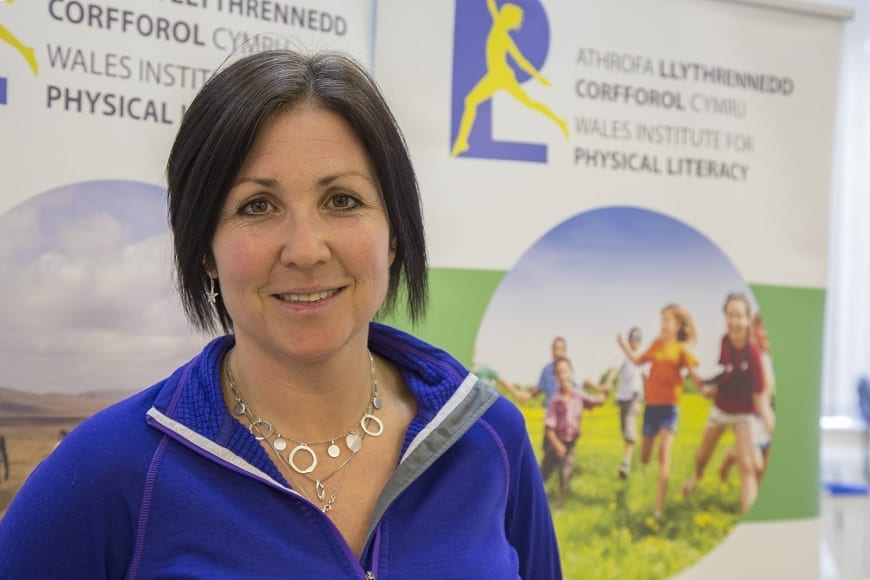

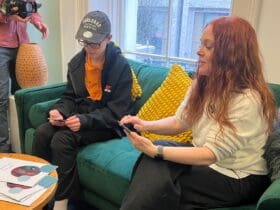
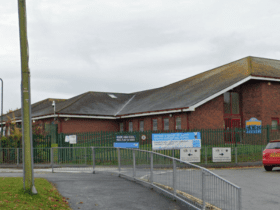
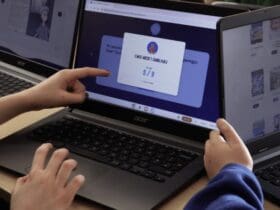
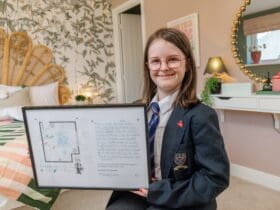
Leave a Reply
View Comments